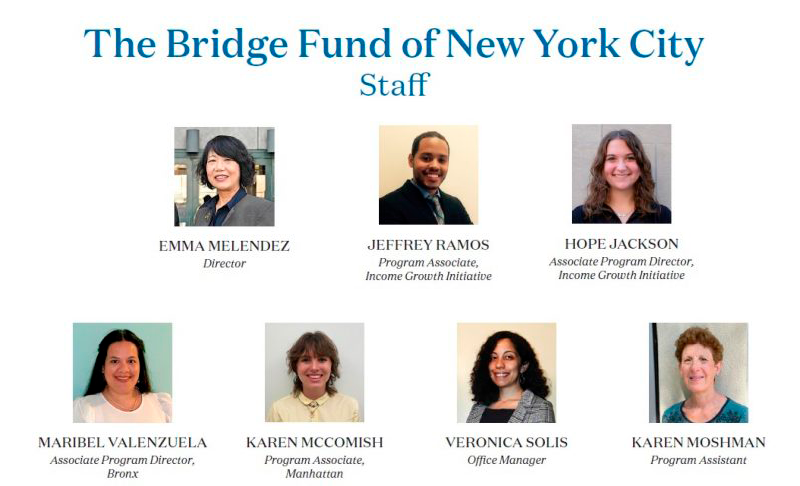The Bridge Fund of New York City
Who we are.

Emma Melendez
Director, The Bridge Fund of New York City

Recent Success Stories in New York City
Director’s Annual Message

Ways to Donate!
The New York City Housing & Vacancy Survey for 2023 revealed that the City has experienced the tightest housing market in over 50 years. The rental vacancy rate fell to a multi-decade low of 1.4 percent. With that and high inflation, among other factors, it is not surprising in 2023 low-income tenants sought help from The Bridge Fund of New York City to remain in their apartments and homes.
Against this background, The Bridge Fund provided one or more services to almost all clients. These services included compassionate listening, referrals, benefits assessment, advocacy, budget counseling, and more. To clients who demonstrated the ability to hold onto their housing long-term or who could be helped to meet this and other requirements, the program also provided modest financial assistance to pay rent or mortgage, helping to prevent eviction and homelessness. A total of 426 client-households have been prevented from losing their affordable housing during 2023: twelve with Bridge Fund services and outside emergency rent grants secured on their behalf, and 414 with our services and Bridge Fund financial assistance, which averaged $2,080 per household and benefited 944 adults, seniors, and children.
Through our successful Income Growth Initiative, roughly 180 clients were helped to envision what is possible for their financial futures, educational growth, and professional development. These clients received one or more services – strategic budgeting, career advisement, resume preparation, job search help, and expert referrals to quality vocational training programs. They also received encouragement and were monitored through the course of their training. It is worth mentioning that referrals are accepted from various sources, including community colleges that seek our help to prevent their working poor students from losing their housing and dropping out of school.
Based on Bridge Fund monitoring of former clients that received both services and financial assistance for rent, we know that 92% are in their homes one year after our initial intervention. The same is true of 88% monitored at their two-year milestone. These outcomes demonstrate to us that our service model offers long-term benefits that represent a fraction of the cost to taxpayers of shelter placement, which for a family in New York City is estimated to be more than $85,000 a year!
Emma Melendez
DIRECTOR, THE BRIDGE FUND OF NEW YORK CITY


